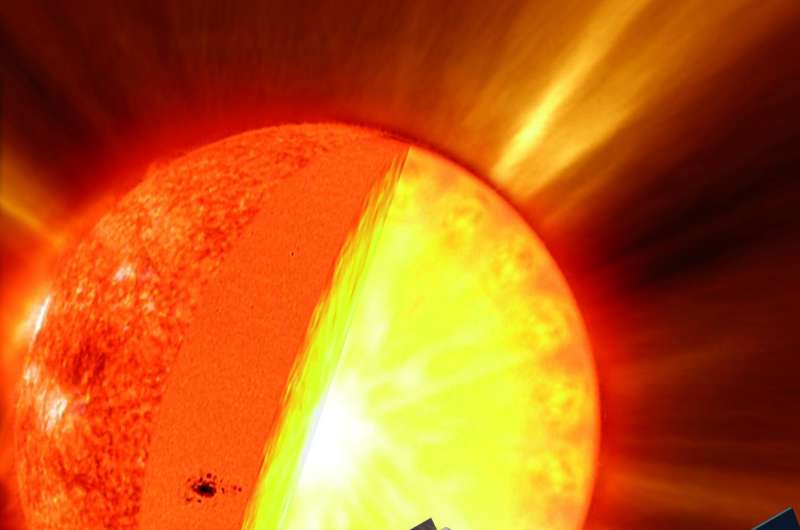


Solar Atmosphere (From the Photosphere to the Solar Corona)Ītmosphere of the Sun is the place where all of the solar activity takes place. However it is important to note that the Sun does not have exact well-defined boundaries as it is gaseous in nature and the aforesaid values are the ones derived from the " Standard Models of the Sun" and the application of physical laws. As soon as water reaches to its boiling point, we start noticing the bubbles on the water which is convection phenomena. Convection, a process, which can be well explained through the example of water boling in a kettle. Similarly, in the convection zone, the energy is transmitted through the process of convection. The radiative zone is that layer of the solar interior in which the energy, generated in the core, is transmitted through the process of radiation. The core is the main site of nuclear reactions where the hydrogen atoms are converted to helium and in the process converts mass into energy using the famous Einstein's relation of E = mc^2, where E is the energy emitted, m is the mass and c is the speed of light. The energy generation through (proton-proton) nuclear-chain reactions occurs in the " core" of the Sun which spans from the center to ~20% of the solar radius. The solar interior is further subdivided in three prominent zones known as following: Therefore, an alternate technique through measuring "Heartbeats of the Sun" has been developed by the solar researchers to explore solar interior, also termed as Helioseismology. In this regards, solar interior is that part of the Sun which is can not be directly probed with the help of light/photons emitted from the Sun. Due to the infinite number of collison of photons with the dense matter inside the Sun, no light ray can make up directly from the core of the Sun to us. The center of the Sun is ~ 700,000 km below the visible surface, also known as photosphere. The study of the Sun is subdivided majorly as follows:įigure: Multi-wavelength Solar Atmosphere Our sun is known to reside in a minor arm, called Orion Cygnus. For example, NASA's Wide-field Infrared Survey Explorer (WISE) is one of such instrument which is dedicated for the stuudy of our Milky Way galaxy's spiral arms. Several space and ground-based science missions are under operation to study our galaxy. In the sky, Milky way can be spotted with naked eyes eyes on the very clear and dark nights. Galaxy is referred to the cluster of stars collectively moving in space around a nucleus, mostly Active Galactic Nuclei or Black Hole. Our Sun, although ~109 times bigger in size (diameter) than our planet Earth, fills the picture of our galaxy, known as the Milky Way, as tiny as even less than a dot. Fact sheet for the Sun in detail can be referred from this link. Due to its relativly closer distance from earth than other stars (the next nearest star is "Alpha centauri", 4.2 light years away from our Solar system), Our Sun, is the only star in the Universe which can be studied in detail through surface details and features of the size as good as a few tens of kilometers.


 0 kommentar(er)
0 kommentar(er)
